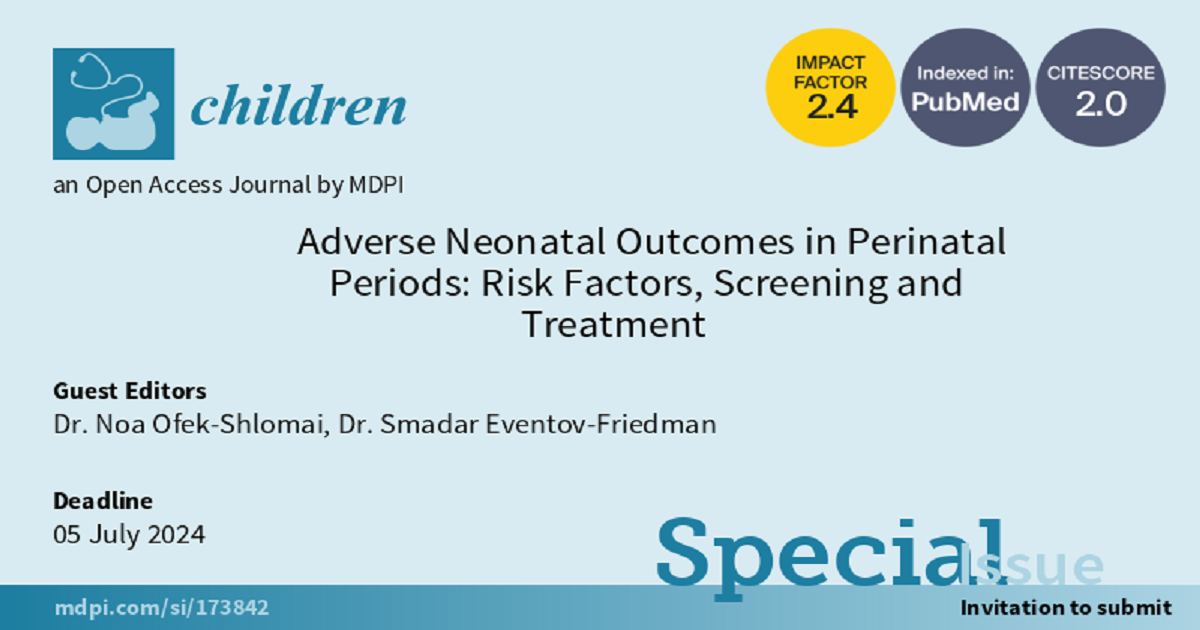Adverse Neonatal Outcomes in Perinatal Periods: Risk Factors, Screening and Treatment
A special issue of Children (ISSN 2227-9067). This special issue belongs to the section "Pediatric Neonatology".
Deadline for manuscript submissions: 5 July 2024 | Viewed by 1596

Special Issue Editors
Interests: neonatology; growth and nutrition in very low birth weight infants; sedation in the NICU; renal failure in the NICU; microbiom
Special Issue Information
Dear Colleagues,
Preterm birth affects approximately 15 million infants each year, and accounts for around 11% of live births worldwide. While modern neonatology has improved survival rates in the smallest and sickest infants, these infants are susceptible to a wide range of long-term adverse outcomes. Long term consequences may include impairments in the respiratory and cardiovascular systems (bronchopulmonary dysplasia and right heart failure), chronic kidney disease, sub-optimal growth and feeding issues, short bowel syndrome, late-life cardiometabolic disease and psychological and psychosocial long-lasting issues.
In terms of cognitive and neurodevelopmental impairment including vision and hearing impairments, preterm infants are at an increased risk of developmental delays, intellectual disabilities, learning difficulties, and behavioral disorders.
A multidisciplinary collaboration and holistic approach to extremely preterm infants may allow better follow-up and improve long term outcomes.
Dr. Noa Ofek-Shlomai
Dr. Smadar Eventov-Friedman
Guest Editors
Manuscript Submission Information
Manuscripts should be submitted online at www.mdpi.com by registering and logging in to this website. Once you are registered, click here to go to the submission form. Manuscripts can be submitted until the deadline. All submissions that pass pre-check are peer-reviewed. Accepted papers will be published continuously in the journal (as soon as accepted) and will be listed together on the special issue website. Research articles, review articles as well as short communications are invited. For planned papers, a title and short abstract (about 100 words) can be sent to the Editorial Office for announcement on this website.
Submitted manuscripts should not have been published previously, nor be under consideration for publication elsewhere (except conference proceedings papers). All manuscripts are thoroughly refereed through a single-blind peer-review process. A guide for authors and other relevant information for submission of manuscripts is available on the Instructions for Authors page. Children is an international peer-reviewed open access monthly journal published by MDPI.
Please visit the Instructions for Authors page before submitting a manuscript. The Article Processing Charge (APC) for publication in this open access journal is 2400 CHF (Swiss Francs). Submitted papers should be well formatted and use good English. Authors may use MDPI's English editing service prior to publication or during author revisions.
Keywords
- prematurity
- very low birth weight
- neurodevelopmental impairment
- adverse outcome






